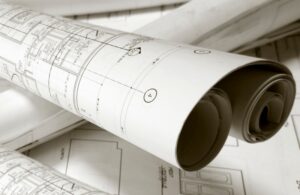In the world of construction, the choice between design-build engineering and turnkey construction can significantly impact the success of a project. Each approach comes with its own set of advantages and drawbacks, making it crucial for project owners to understand the nuances before making a decision.
Schaible’s Mechanical offers design-build engineering for commercial, institutional, industrial, and retail buildings. This model removes the inefficiencies and delays of working with multiple subcontractors and allows us to exert full quality and schedule control over your project.
In this blog post, we will delve into the key differences between design-build engineering and turnkey construction.
Design-Build Engineering
Design-build engineering is a collaborative method where the design and construction phases are integrated into a single, streamlined process. This approach fosters close communication and collaboration between the design and construction teams. The pros of design-build engineering include accelerated project delivery, streamlined communication, and potential cost savings.
Turnkey Construction
Turnkey construction, on the other hand, offers a single-point responsibility for the entire project. In this approach, the construction company takes on the responsibility for both the design and construction phases. The limited control owners have over the design, the potential for higher upfront costs, and difficulties in adapting to design changes are important cons to consider.
Key Differences Between Design-Build and Turnkey:
- Design Control:
- Design-build offers more collaboration and control during the design phase.
- Turnkey construction provides less owner control over the design process.
- Project Timeline:
- Design-build often leads to faster project delivery due to the integrated nature of design and construction.
- Turnkey construction, while efficient, may have a longer initial planning phase.
- Cost Considerations:
- Design-build may offer potential cost savings through the elimination of bidding periods and faster project timelines.
- Turnkey construction provides predictable costs but may have higher upfront expenses.
- Owner Involvement:
- Design-build requires a higher level of owner involvement in decision-making.
- Turnkey construction allows for minimal owner involvement once the project is initiated.
Factors to Consider When Choosing Between Design-Build and Turnkey:
- Project Size and Complexity:
- Design-build may be more suitable for complex projects with a need for ongoing collaboration.
- Turnkey construction may be preferable for simpler projects with well-defined requirements.
- Budget Constraints:
- Design-build can provide potential cost savings, making it attractive for projects with budget constraints.
- Turnkey construction offers predictability but may require a higher upfront budget.
- Owner’s Level of Involvement:
- Consider the level of involvement the project owner desires throughout the construction process.
The Bottom Line
The choice between design-build engineering and turnkey construction is not a one-size-fits-all decision. Project owners must carefully weigh the pros and cons, considering project-specific factors such as size, complexity, budget, and risk tolerance.
Ultimately, consulting with construction professionals is crucial to making an informed decision tailored to the unique needs of the project. By understanding the differences between these approaches, project owners can navigate the construction process more effectively and ensure the success of their projects.

